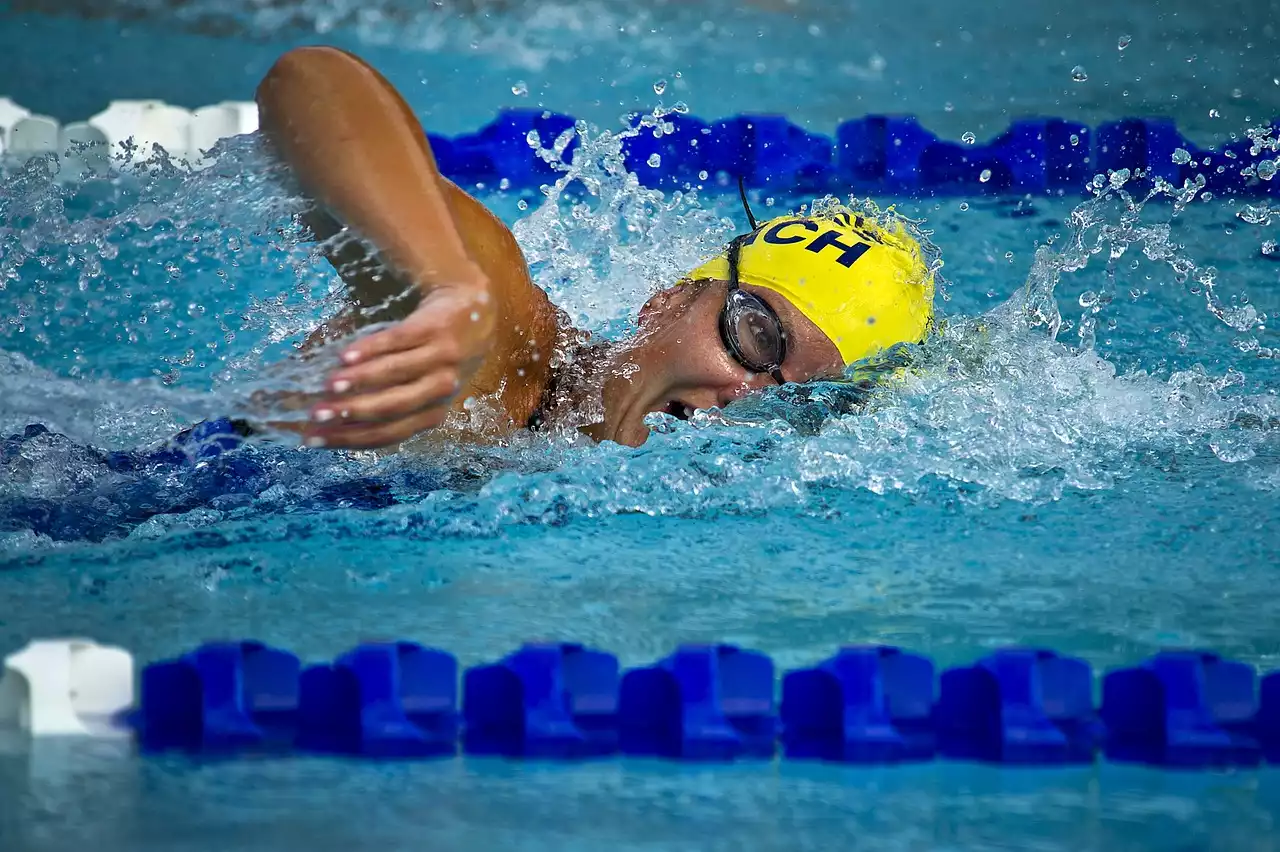Overview of the Different Swim Strokes
There are four main swim strokes: crawl, breaststroke, backstroke, and butterfly. The crawl stroke, also known as the freestyle stroke, is the most common stroke used in competition and is considered to be the fastest stroke. It is characterized by an alternating arm motion and a flutter kick. The breaststroke is a slower stroke that is characterized by a frog-like kick and a simultaneous arm motion. The backstroke is done on the back and is characterized by a flutter kick and an alternating arm motion. The butterfly stroke is the most difficult and is characterized by a simultaneous arm motion and a dolphin kick.
Rules and Techniques for Each Swim Stroke
Each swimming stroke has its own set of rules and techniques. The crawl stroke is the most common and is used in most competitions. The rules for the crawl stroke are simple; the arms must alternate and the legs must flutter kick. The breaststroke is characterized by a frog-like kick and a simultaneous arm motion. The rules for the breaststroke are that the arms must move in a simultaneous motion and the legs must move in a frog-like kick. The backstroke is done on the back and is characterized by a flutter kick and an alternating arm motion. The rules for the backstroke are that the arms must alternate and the legs must flutter kick. The butterfly stroke is the most difficult and is characterized by a simultaneous arm motion and a dolphin kick. The rules for the butterfly stroke are that the arms must move in a simultaneous motion and the legs must move in a dolphin kick.
Tips for Improving Your Swim Stroke
Improving your swim stroke is a process that takes time and dedication. It is important to practice consistently and focus on perfecting the technique of each stroke. Here are a few tips that can help you to improve your swim stroke:
- Work on your breathing. Proper breathing technique is essential for efficient swimming.
- Practice good body position. Make sure that your body is in the correct position when swimming to ensure that you are using the least amount of energy.
- Focus on your kick. Your kick is a key element of swimming and should be practiced regularly.
- Work on your arm stroke. Make sure that your arms are entering and exiting the water correctly and that you are using the correct technique.
- Use a pull buoy. A pull buoy is a great tool for improving your technique and can help to keep your body in the correct position.
- Use a kickboard. A kickboard can help you to focus on your kick and improve your speed and efficiency.
Swimming Pool Safety Tips
Swimming pools can be a fun and enjoyable way to cool off on hot days, but they can also be dangerous if the proper safety precautions are not taken. Here are a few swimming pool safety tips:
- Always supervise children. Make sure that there is an adult present at all times when children are swimming.
- Use the buddy system. Swimming with a buddy can help to ensure that someone is there in case of an emergency.
- Know your limits. Make sure to swim within your skill level and never try to swim beyond your abilities.
- Wear a life jacket. Wearing a life jacket is a great way to stay safe while swimming.
- Stay hydrated. Drinking plenty of water is an important part of staying safe in the pool.
- Follow the rules. Always follow the rules of the pool and respect the lifeguard's instructions.
Swim Gear - What You Need and What You Don't
Swimming is an enjoyable activity, but it can also be dangerous if the proper safety precautions are not taken. Having the right swim gear is essential for staying safe and having fun in the water. Here is a list of the essential swim gear that you need and the items that you don’t need:
- Need: Swimsuit, goggles, swim cap, life jacket
- Don’t Need: Floaties, pool noodles, inflatable toys
Swimsuits are essential for keeping you comfortable and covered in the water. Goggles are necessary for protecting your eyes and allowing you to see underwater. Swim caps are important for keeping your hair out of your face and preventing it from getting into your eyes. Life jackets are essential for keeping you safe in the water, even if you are a strong swimmer. Floaties, pool noodles, and inflatable toys are not necessary and can be dangerous if used improperly.
Swimming Workouts and Drills
Swimming workouts and drills can help to improve your swimming technique and increase your strength and endurance. Here are a few swimming workouts and drills that can help you to get the most out of your swim:
- Kick sets: Kick sets are a great way to work on your kick technique and increase your speed and endurance.
- Pull sets: Pull sets are a great way to work on your arm technique and increase your overall strength and power.
- Fartlek sets: Fartlek sets combine swimming and running and are a great way to improve your endurance and speed.
- Interval sets: Interval sets are a great way to increase your speed and stamina and improve your overall fitness.
- Race pace sets: Race pace sets are a great way to practice racing and work on your race strategy.








